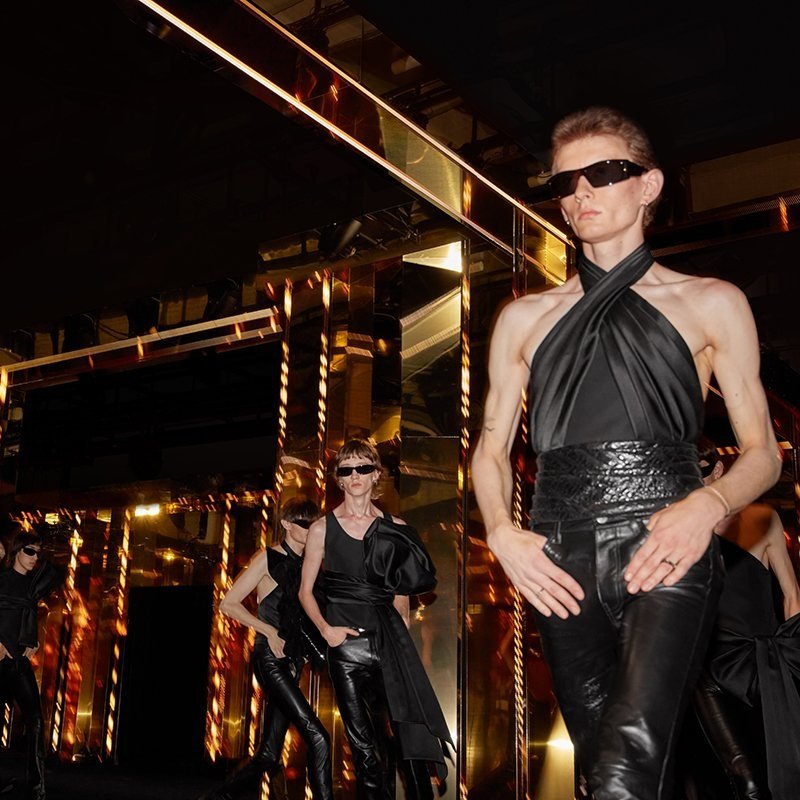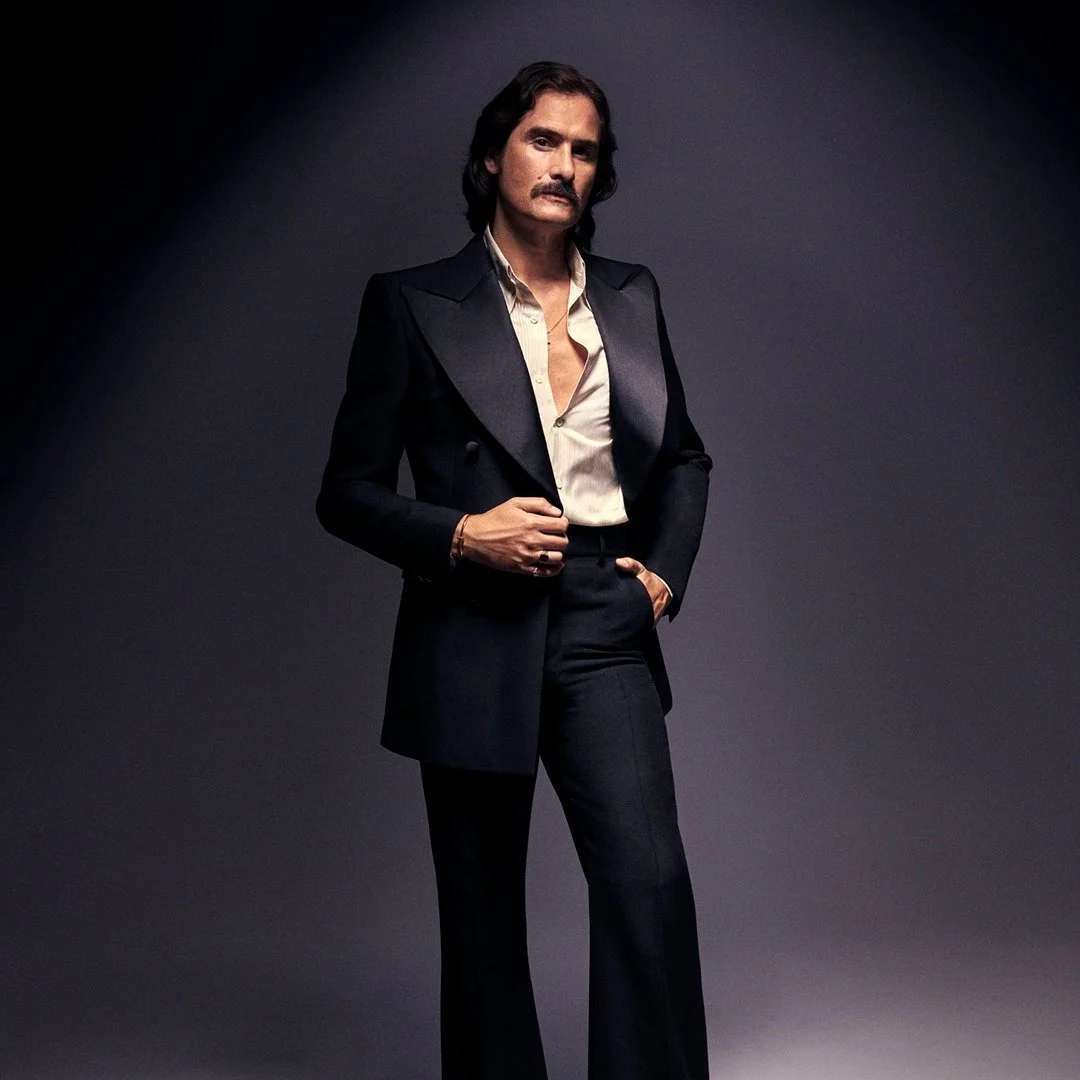Celeste-approved designer Steve O Smith brings a masterclass of techniques - and feeling - into his collections.
Steve O Smith brings the expressive brush strokes of his sketches into real-life fashion. He started experimenting within his collections after graduating from his BA undergraduate, understanding what truly connects with his core inspiration. However, in March 2020 the pandemic forced him to re-think the pace of his work, by bringing his process to a halt.
Changing pace, Smith decided to further take on the fashion design MA programme in Central Saint Martins, crafting his collection and presenting at the 120-designer MA show during London Fashion Week in February this year. Speaking to Perfect, the British creative guides us through his unique process of sketching and crafting through a myriad of techniques like appliqué, and how his graduate collection has taken a complete new meaning throughout this past year.
Angel: Steve, what were your first feelings and thoughts about fashion, how did you get introduced to the industry?
Steve Smith: I started making collections not long after graduating from my BA. Between 2017 and 2020, I had been showing on schedule and doing sales, which all sort of culminated in a window display I did in early January 2020 for Opening Ceremony NYC. The store announced that it was closing 7 days into the display, which left me in quite a tricky situation with a new collection in production and nowhere to sell it. In those three years, my experience of fashion was good at times, but the pace of the cycle had started to feel unsustainable. As a designer and business owner you hold pretty much all of the risk in a wholesale system and are expected to spend what profits you do make on shows. By mid-February, after I had done a lookbook for my AW20 collection, I had decided that I wanted to take a break. I started looking into the MA program because I still wanted to make work, but I also wanted to take time to reflect on the work I had already made. Obviously, by March, everything started to change and taking a break took on a slightly new meaning.
Angel: How did you start out with your fashion designs and drawing?
Steve Smith: I think I started by stopping. During that first lockdown of the pandemic, I took the time to look back on the things I had made and really think about what I thought was good and what I thought was bad, which was about half and half. For a while, I had been feeling like my drawings were the most authentic part of my process because I just did them without thinking too much about it. By the time we had started attending classes in November 2021, we went back into lockdown, and so I was drawing a lot to communicate ideas. That’s when I committed to the idea of just making my drawings.
Angel: You are graduating from CSM this year, and presented at the MA CSM Show, what did your time at design school teach you? How did you find the whole experience of creating the collection?
Steve Smith: Having that idea was the first step on a journey that got worse before it got better. For my first attempts, I was painting and drawing on the garments to try and make them look like the drawings I had done, which ended up being a total disaster. My only current rule as a result is no wet mediums, because I think the pieces that I made for my pre-collection are some of the worst clothes I’ve ever done. In retrospect, the tutors did try to warn me several times, but I think ultimately it was a necessary mistake. I think what the environment of education affords you is time and feedback. The feedback was that the work was terrible, but I had committed to the idea, so I spent the time I had that summer pushing it forward.
I draw quite expressively and quickly, but the way I was cutting the garments wasn’t reflecting that, so I started by trying to approach the pattern cutting process like I did drawing. Eventually, by late July, I went to Adonis on Freedom Day, got Covid, and ended up in a 7-day isolation in my flat. I wasn’t very ill, and I was bored out of my mind, so I just worked. Eventually, without being able to go outside and get materials, I started to run out of fabric, so I started stitching down the scraps I still had onto the garments to imitate the lines in my drawings. This appliqué technique felt right to me immediately, because it allowed me to draw with the scissors and fabric in the same intuitive way I did with mediums on paper.
Angel: Do you have a particular process of inspiration? How do you create your process?
Steve Smith: The main inspiration for this collection was George Cruikshanks’s Monstrosities, a series of caricature etchings that provided a yearly satire of fashions from 1819 to 1835. To me, they felt like such a witty takedown of the vulgarity, absurdity and opulence of 19th century fashion that still feels relevant today. From there I looked at a lot of other caricature artists, from Hogarth and Gilray through to Beerbohm, Spy and Ape. I also looked at Dada artists, mainly George Grosz, who took some of the caricature techniques and gave them a more sinister depth in his drawings of the Weimar republic. Fashion illustration was also a focus, from Graua, Tony Viramontes, my tutor Julie Verhoeven and Jo Brocklehursts, who I felt specifically drawn to because her fashion drawings also had a feeling of satire tempered with something slightly darker.
Once I get scans of my research, I usually print them off and put them all on a wall and I draw from them, taking bits and pieces and disregarding others. Once I get bored of certain references, I start swapping them out gradually, so the wall evolves. I made over 400 drawings from these references between August 2021 and January 2022, mostly at A1.
In terms of the creative process, it started to feel a lot more circular between the initial drawings, the fabrication and applique, and the cutting. Some of the looks got toiled up to 5 times to keep pushing and refining the volumes and fit, and that would inform the way I was drawing. The materials I was drawing with would also be reflected in the fabric choices for the applique. Crayon could feel like denim or wool, ink would feel like silk or cotton sateen. Whatever fabric I used, I tried to lay them down at a similar pace to how I would lay the marks down on paper. I was making large scale drawings on paper throughout, and I started to think of the pattern cutting as drawing too, because that is essentially drawings on paper as well, albeit with more of a technical outcome. The applique felt like another kind of drawing too, so I was drawing at every stage. This led to me thinking of the clothes themselves as being drawings.
Angel: How do you see the growth of your collections in the near future?
Steve Smith: When I finished the MA, I actually felt like my drawings could be better, so I signed up for life drawing classes at the Royal Drawing School which I’m doing at the moment. I’ve started making new work based on what I’m doing in those classes and it feels like I’m refining the language. Now that the clothes are drawings, I want that to be reflected in the amount that exist, the standard of their construction and the pace I make them at. I also want them to be good drawings, which will involve continual work on my part.
Angel: What are you also looking forward to personally?
Steve Smith: When I stopped making work before doing the MA program and took that time to reflect on what I’d done so far, it was the work I cared about, not the noise around it. In fashion, there tends to be a lot of people telling you to do a lot of different things without explaining the personal and professional trade-offs that are involved, be that showing on schedule or participating in wholesale. With the experience I’ve had so far, I know that I’m not interested in moving backwards. I want to prioritise making good work at my own pace and on my own terms, and that’s what I’m looking forward to doing.













